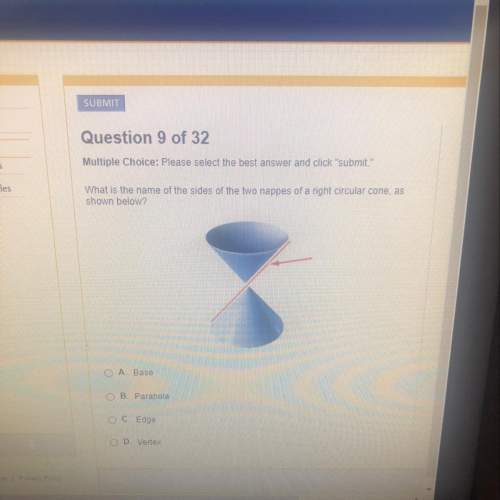
Mathematics, 17.03.2020 03:11 epicriderexe
Australian cattle are known to have a high prevalence of congenital deafness. Deafness in both ears is referred to as bilateral deafness, while deafness in one ear is referred to as unilateral deafness. Cattle have a "mask" around one or both eyes (in other words, a unilateral mask or a bilateral mask). Suppose that 40% of Australian cattle have black coats; these individuals are commonly referred to as "Blue Heelers" as opposed to "Red Heelers". Among Blue Heelers, 35% of individuals have bilateral masks and 25% have unilateral masks. About 50% of Red Heelers exhibit no eye masking and 10% have bilateral masks. Let M represent the event that an Australian cattle has a facial mask, where M2 represents a bilateral mask, M1 represents a unilateral mask, and M0 indicates lack of a mask. a) Calculate the probability an Australian cattle has a facial mask and a black coat. b) Calculate the prevalence of bilateral masks in Australian cattle. c) Among Australian cattle with bilateral facial masks, what is the probability of being a Red Heeler?d) Unilateral deafness occurs in Red Heelers with probability 0.15, in both dogs that either lack facial masking or exhibit a unilateral mask; for both unmasked and unilaterally masked Red Heelers, 60% of dogs are not deaf. The overall prevalence of bilaterally masked Australian cattle with bilateral deafness and red coats is 1.2% and the overall prevalence of bilaterally masked Australian cattle with unilateral deafness and red coats is 4.5%; these prevalences are the same for Australian cattle with black coats. Among Blue Heelers with either no facial masking or a unilateral mask, the probability of unilateral deafness is 0.05 and the probability of bilateral deafness is 0.01. Let D represent the event that an Australian cattle is deaf (i. e., deaf in at least one ear), where D2 represents bilateral deafness and D1 represents unilateral deafness. i. What is the probability that an Australian cattle has a bilateral mask, no hearing deficits, and a red coat?ii. Calculate the proportion of bilaterally masked Blue Heelers without hearing deficits. iii. Compare the prevalence of deafness between Red Heelers and Blue Heelersiv. If a dog is known to have no hearing deficits, what is the probability it is a Blue Heeler?

Answers: 3
Another question on Mathematics

Mathematics, 21.06.2019 12:30
(a) what was jennifer's gross pay for the year? (b) how much did she pay in state income tax? (c) the amount in box 4 is incorrect. what dollar amount should have been entered in box 4? (d) the amount in box 6 is incorrect. what dollar amount should have been entered in box 6? (e) how much was jennifer's fica tax? (f) jennifer's taxable income was $32,104. she's filing her taxes as head of household. does she owe the government more in taxes, or will she receive a refund? how much will she owe or receive?
Answers: 3

Mathematics, 21.06.2019 16:10
To find the extreme values of a function f(x.y) on a curve x-x(t), y y(t), treat f as a function of the single variable t and use the chain rule to find where df/dt is zero. in any other single-variable case, the extreme values of f are then found among the values at the critical points (points where df/dt is zero or fails to exist), and endpoints of the parameter domain. find the absolute maximum and minimum values of the following function on the given curves. use the parametric equations x=2cos t, y 2 sin t functions: curves: i) the semicircle x4,y20 i) the quarter circle x2+y-4, x20, y20 b, g(x,y)=xy
Answers: 2

Mathematics, 21.06.2019 18:00
Sandy is ordering bread rolls for her party,she wants 3/5 of the rolls to be whole wheat. what other factions can represent part of the rolls that will be whole wheat? shade the models to show your work.
Answers: 1

Mathematics, 21.06.2019 20:00
Find the slope of the line passing through a pair of points
Answers: 2
You know the right answer?
Australian cattle are known to have a high prevalence of congenital deafness. Deafness in both ears...
Questions

Mathematics, 24.03.2020 21:02






Mathematics, 24.03.2020 21:02



Mathematics, 24.03.2020 21:02


Health, 24.03.2020 21:03

Mathematics, 24.03.2020 21:03






Mathematics, 24.03.2020 21:03

Mathematics, 24.03.2020 21:03




